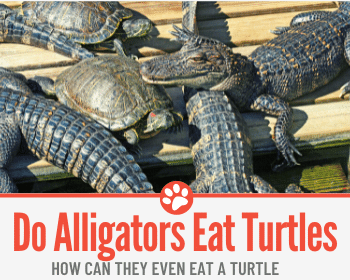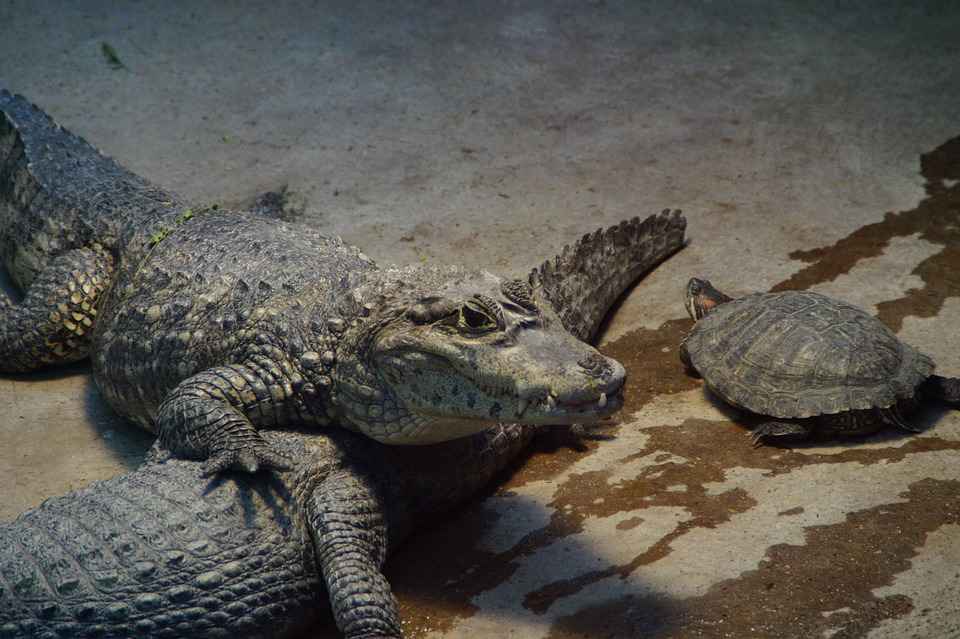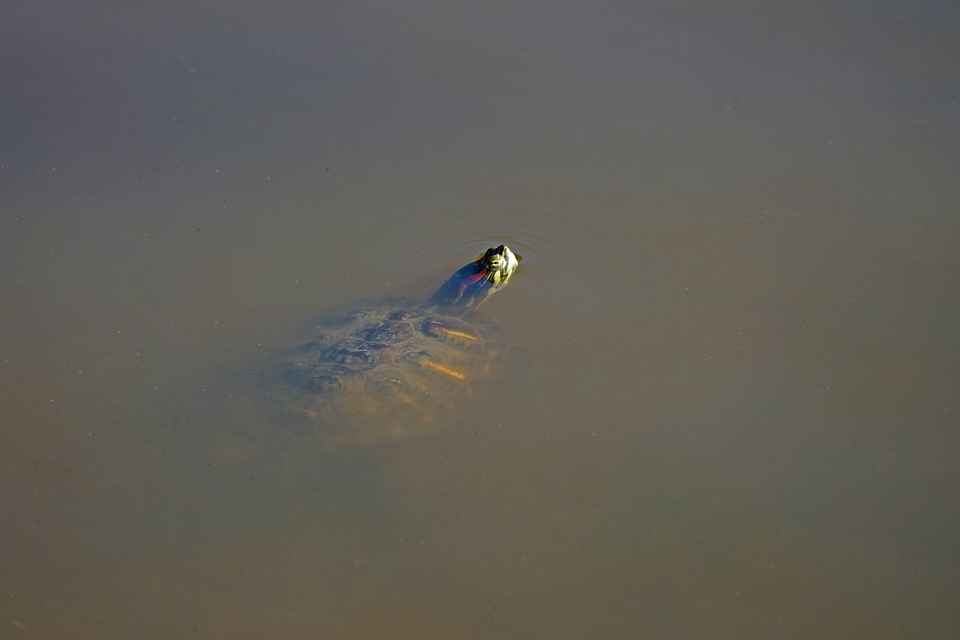 A quick internet search on alligators and turtles will quickly result to photos of these two animals hanging out in the wild together, sometimes even with the turtle riding the alligator’s back like two best friends.
A quick internet search on alligators and turtles will quickly result to photos of these two animals hanging out in the wild together, sometimes even with the turtle riding the alligator’s back like two best friends.
With these photos all over the internet, one cannot stop but wonder if alligators also prey on these friendly turtles in the wild as well.
Do Alligators Eat Turtles?
Yes Alligators can eat turtles. Alligators may appear friendly with turtles but their wild instincts will always kick in during times of hunger. The condition in the wild is unpredictable so predators like alligators can’t be choosers when there is a shortage of food in their area.
Thus, if a turtle is the easiest, most accessible food available, adult alligators will not hesitate to eat them.
Alligators are lurkers. They usually wait for prey to appear in front of them before they attack. Turtles who are resting near the edge of the water are easy targets for alligators considering that a turtle with their back against the alligator will not be able to spot the predator behind them.
It is good to note though that given their size, younger alligators are not able to eat turtles.
Before they reach adulthood, young alligators will eat smaller snails, insects, fish and worms. They will then gradually start preying on medium to large reptiles and animals as their bodies grow bigger.
Alligators are known to eat bigger animals than turtles but given the fact that turtles generally spend most of their time in the water or by the edge of a body of water, they are closer and more within reach of alligators compared to a small deer and other reptiles and mammals who only go nearby the water for a drink. B
asically, alligators and turtles thrive in the same habitat, thus the closer predator-prey relationship.

Can alligators eat turtles?
Yes, despite its hard shell, alligators can easily devour a turtle in one bite. It is good to know that alligators aren’t really known to be picky eaters. Their carnivorous nature pushes them to devour anything that moves and is within their reach, especially when it’s their feeding period.
Eating a turtle for an alligator would be as easy as eating a pistachio with the shells on for humans. Alligators are known for the incredible strength of their jaw so cracking a very hard shell like that of turtles would be a piece of cake for them.
Alligators grow very big in size so a turtle will definitely be no feat for them to eat. Male alligators can reach 1,000 pounds but on average, grow to about 11 feet (3.5 meters) long and weigh 600 pounds while females can reach about half the weight of their male counterpart and grow to about 8 feet.
Do alligators eat turtle shells?
Yes, alligators also eat the shells of the turtles when they prey on them. Given that they don’t really have hands to use to peel off the shell, alligators have no choice but to eat turtles in one piece. They crush the turtle’s shell to create a chunk of meat that would fit in their throat.
With the average size of a full-grown alligator’s mouth, this will be no issue at all. Their digestive system is made to digest bones, cartilage, shells – basically anything they can swallow.
Alligators usually drown their prey underwater before swallowing it above the water but since turtles can hold their breath under water, it is easier for an alligator to crush the turtle’s body to kill it before swallowing.
How can an alligator break a turtle shell then you may ask? When alligators prey on turtles, they crush the turtle’s shell to fit it in their mouth with their powerful jaws. No matter how hard a turtle’s shell is, this is nothing compared to the jaw power of the alligators.
Alligators have one of the strongest bites in the animal kingdom. Imagine this, if you are inside an alligator’s mouth pushing it open, it will be the same as lifting a pick up truck up. Their bite force can reach up to 9,452 newtons, that’s about 2,124 lbs!
Although it’s good to note that, obviously, these carnivores will ignore an empty turtle shell if they see one lying around!

Do alligators eat snapping turtles?
Snapping turtles are a usual prey for alligators just like other turtles. Snapping turtles live in freshwater, similar to the alligators so they would usually be included in the alligator lunch menu. Despite being a more aggressive breed, alligators are still easily able to prey on snapping turtles.
There is also a variety of snapping turtles named after their resemblance to alligators and their spikes, they are called alligator snapping turtles.
Even with the similar features, alligator snapping turtles may still find their look-alike alligators preying on them.
Do alligators eat turtle eggs?
Alligators normally don’t eat turtle eggs. Considering their size and how their mouth is shaped, grabbing eggs from the ground with their long jaw is almost impossible. Alligators prefer to prey on bigger preys in the wild such as turtles.
Bigger preys will have more meat which in turn will sustain and keeps them full for a longer time so it’s an obvious choice.
Bonus Alligator Facts!
- Alligators can survive without eating for two to three years. If needed, they are able to slow down their metabolism and go on lethargic mode to survive a very long fasting period. When food is sufficient, alligators would usually eat once a week.
- Alligators are about as close as we can get to seeing a dinosaur alive, in fact they have been described as ‘living fossils’. Based on alligator fossils discovered throughout the years, it has been assumed that they existed for about 180 million years. I can only guess that their ability to survive without food for a long time and them being non-picky eaters are some of the reasons!
- Their brains only weigh 8 to 9 grams on average. Given their average weight of 600 pounds, we can say they’re not the ‘brainiest’ animals in the wild.
- Alligators are in the running for the ‘best parents’ award in the animal kingdom. They are known to tend to their young for as long as three years.
- Like turtles, the sex of a newborn alligator depends on the temperature of their nest. Females are born from colder temperature (anything below 30 degree Celsius) and males are born if the nest temperature is above 34 degrees Celsius.
- Alligators have ultra-sensitive vibration sensors on their skin. They may not be the fastest swimmers but they are able to quickly avoid danger since they can detect the slightest vibration in the water.
- The back of an alligator is a literal armor. Each spike on their back has a bony plate inside that make their skin very difficult to penetrate. No wonder their specie survived for millions and millions of years!
- An alligator can survive being frozen in the water in the winter. Just before the water freezes, they will position their nose above the water so they can breathe through ice when their body gets frozen. They can survive like this for a fairly long time until the ice melts
Alligators are the definition of a wild animal – big, strong, tough and robust. Although the more popular American Alligator is no longer included in the endangered species list, unfortunately, their Asian cousin, the Chinese Alligator species is now considered critically endangered. The Chinese Alligator specie is one of the few outside of the Americas.
Just like every other animal, Alligators play a big role in their habitat to keep the nature’s balance. Hopefully, the more knowledge we have of their species, the more we can protect them from being totally wiped off this planet.






